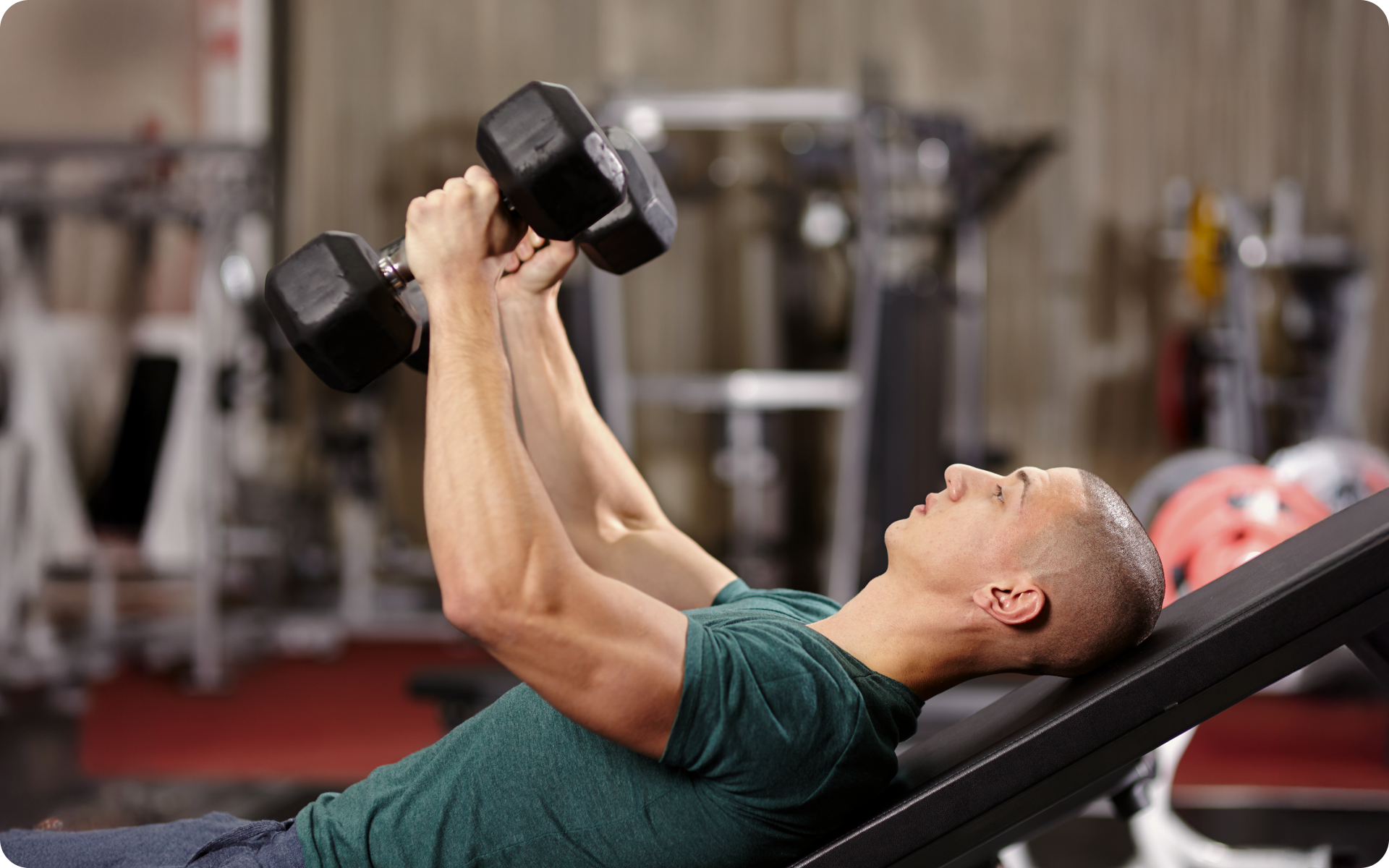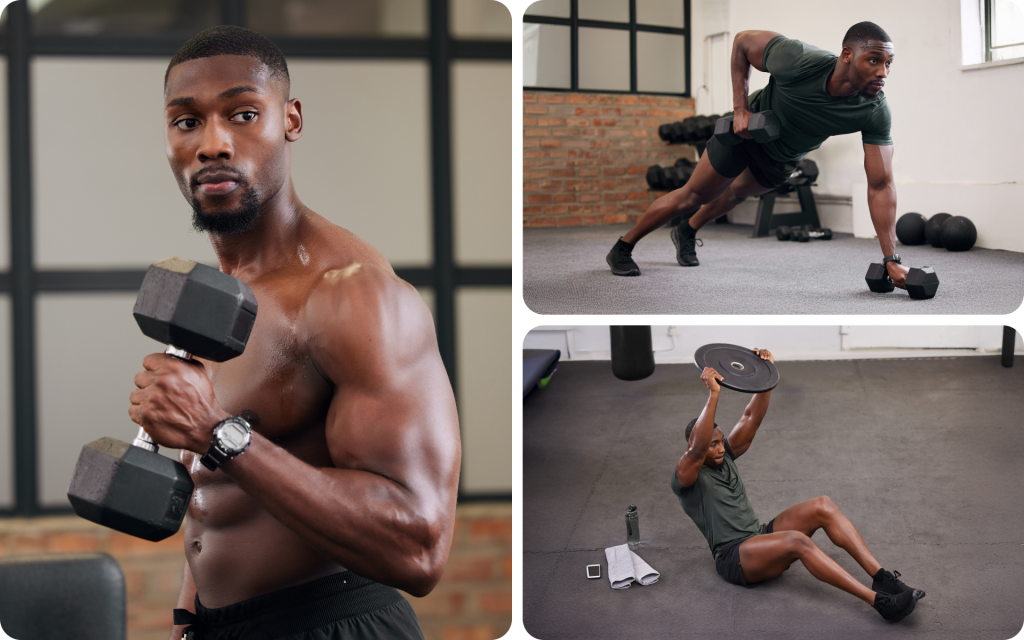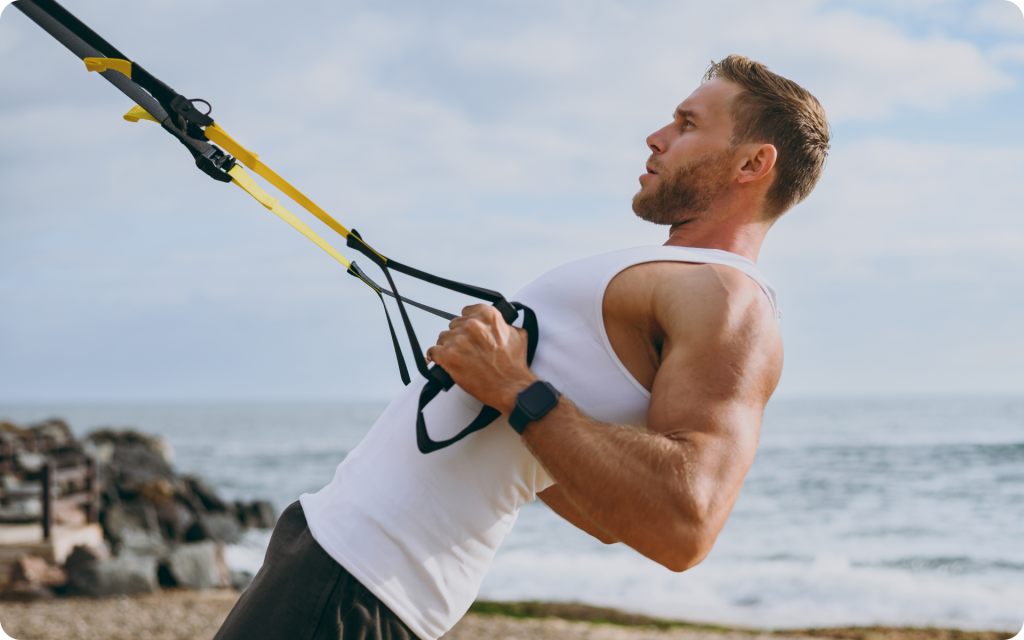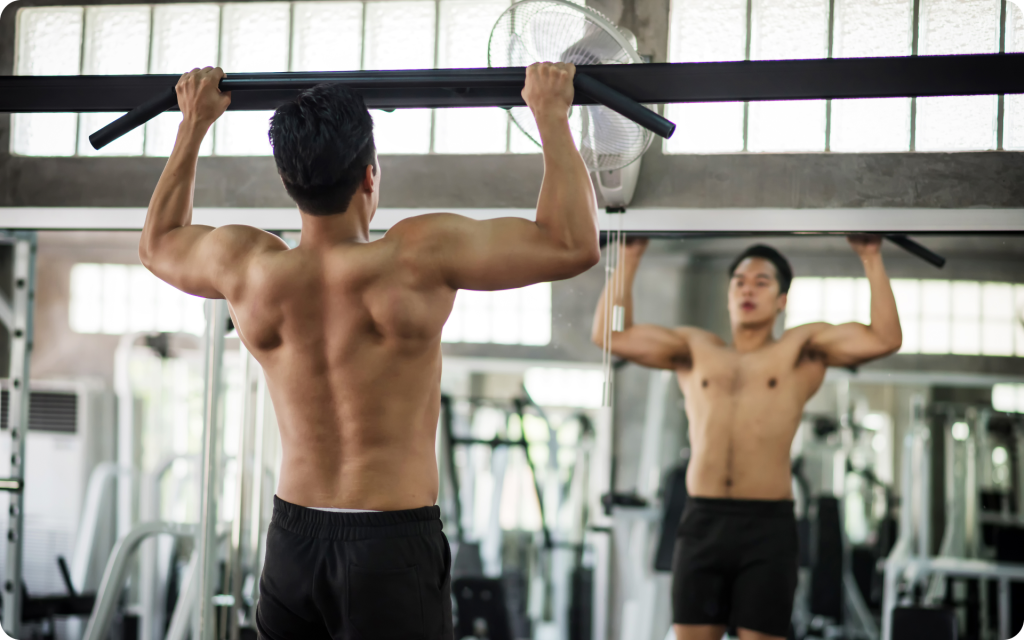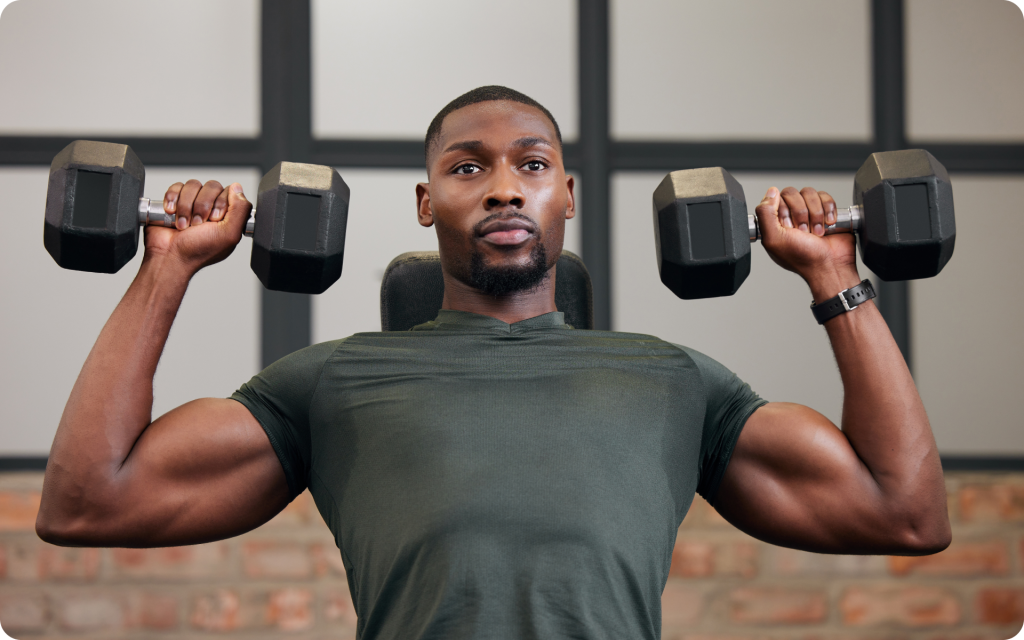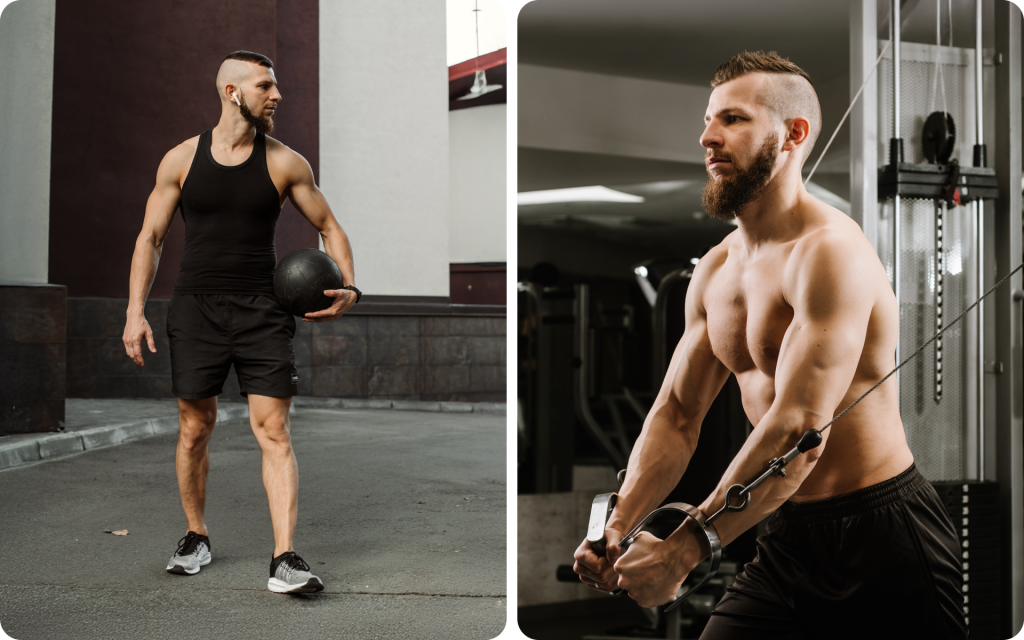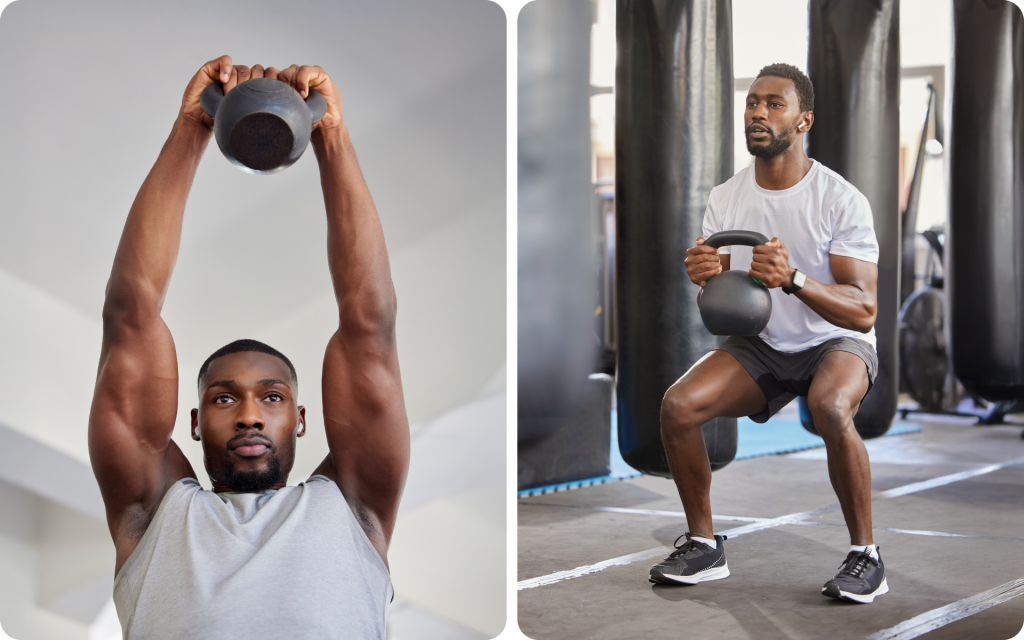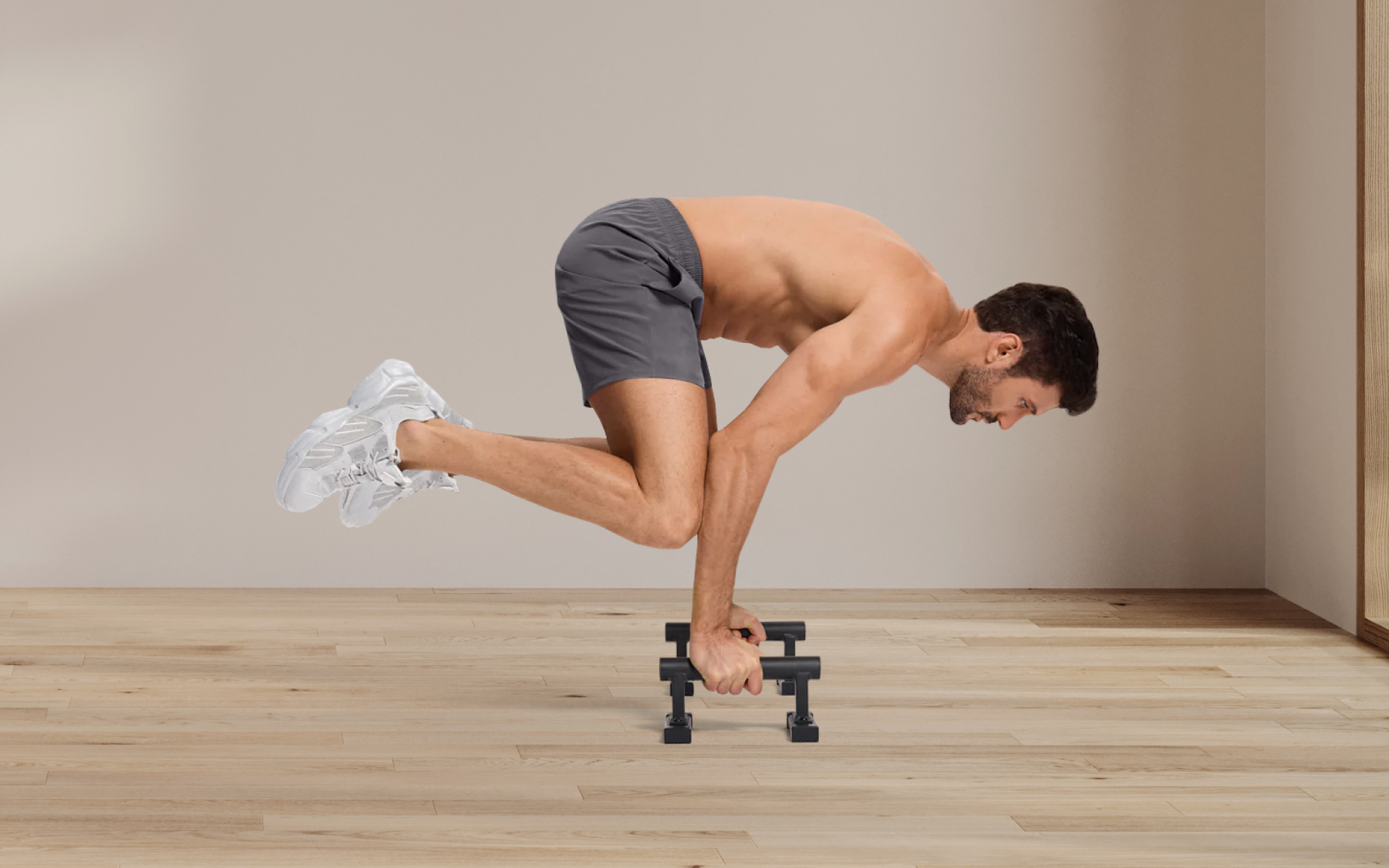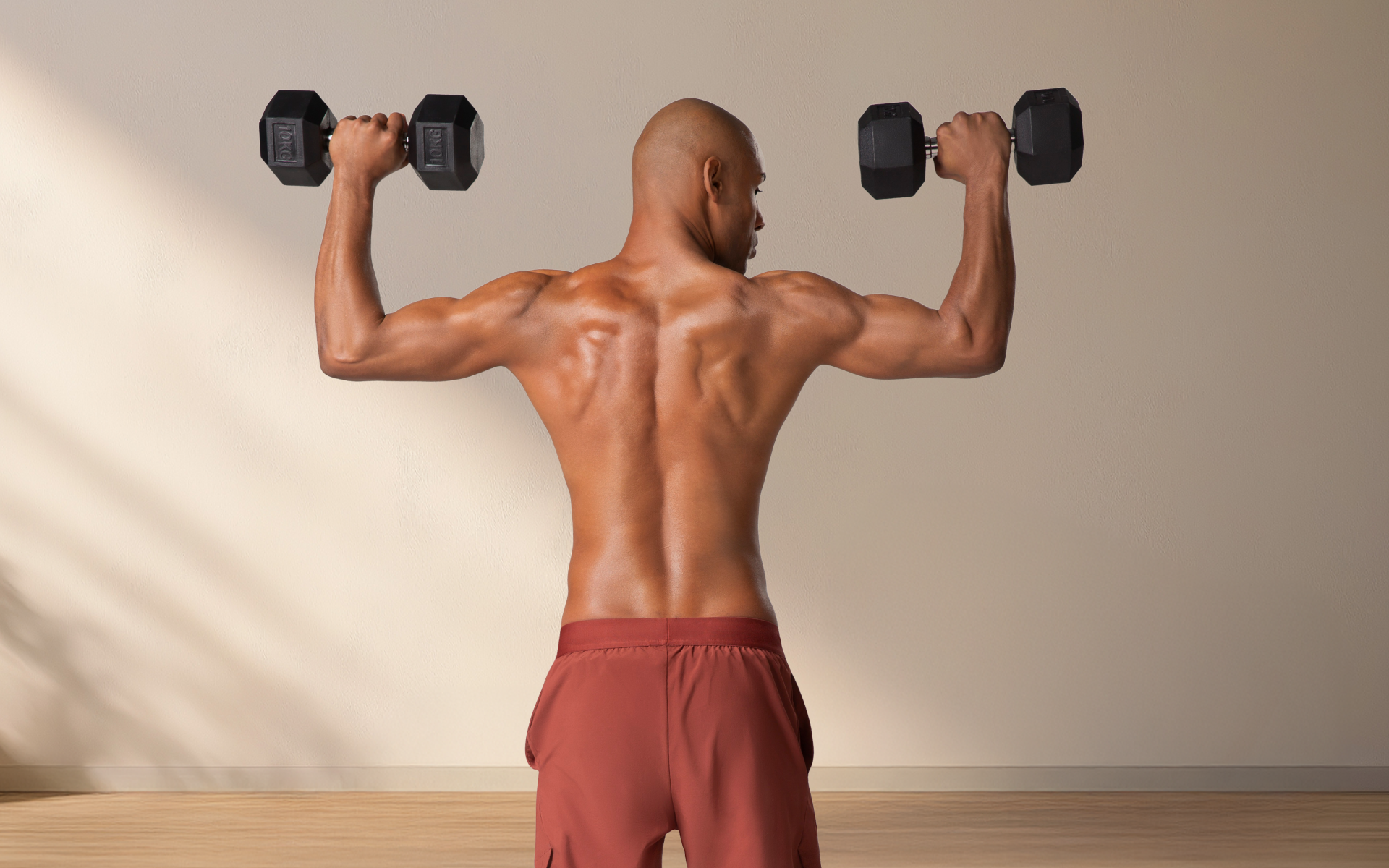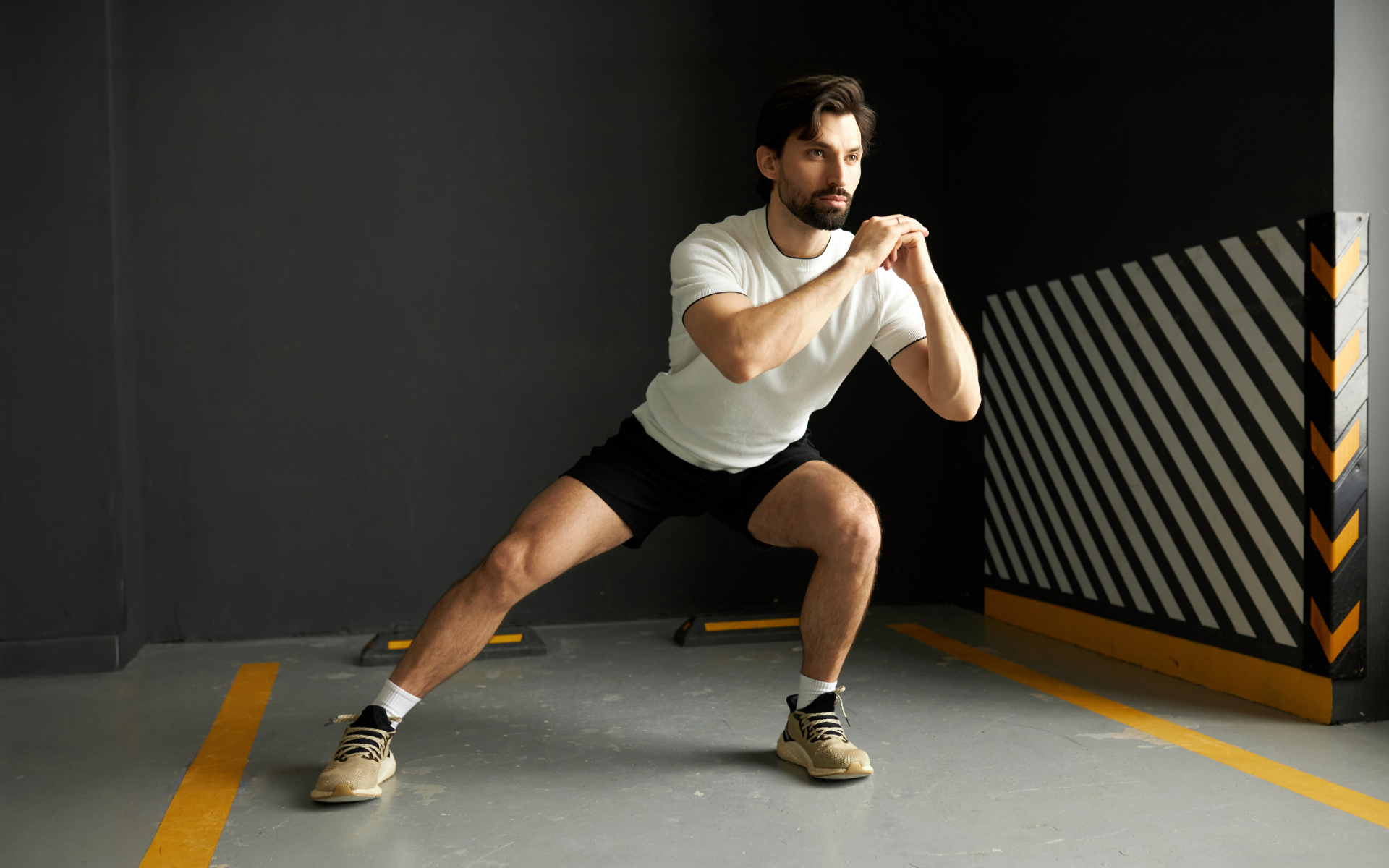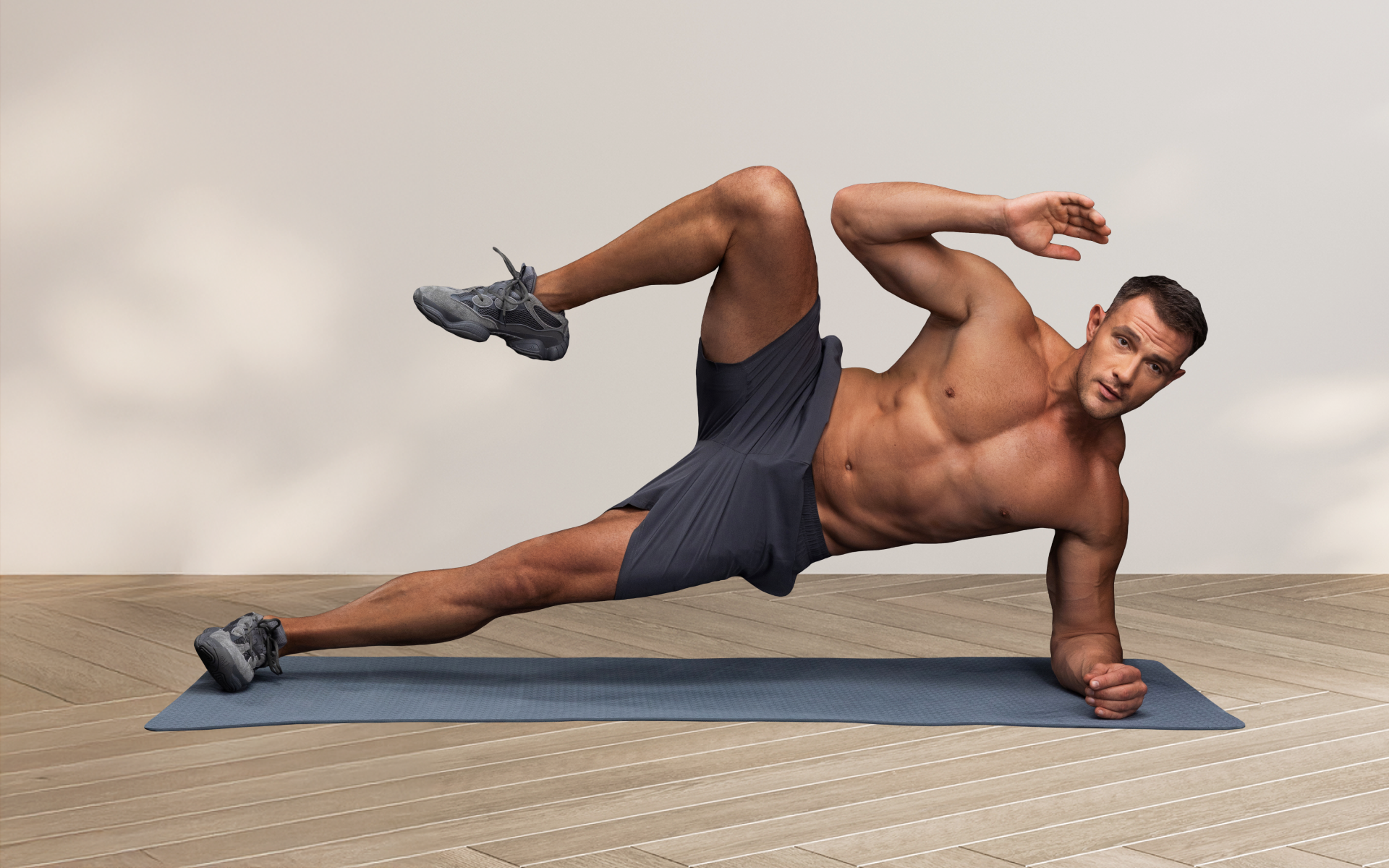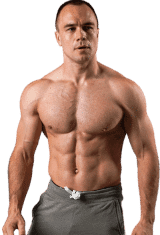Push workouts target the muscles that are involved in pushing movements – movements that push the load away from the body. This helps build upper-body power, stability, and aesthetic development. Understanding how to structure and execute push workouts properly can transform your training results while minimizing your injury risk.
Push training splits have gained tremendous popularity among fitness enthusiasts and athletes because they allow focused attention on specific muscle groups while providing adequate recovery time.
This systematic approach is aligned with evidence-based training principles that emphasize progressive overload, proper movement patterns, and strategic recovery protocols.
This comprehensive guide will walk you through the anatomy and function of push muscles, provide detailed exercise selections for each muscle group, and present evidence-based recommendations for training volume and frequency.
What Do Push Exercises Work in the Gym?
Push exercises target three primary muscle groups:
- Chest (pectorals)
- Shoulders (deltoids)
- Triceps
These muscles work synergistically during pushing movements, which makes them obvious training partners in a well-structured workout split.
The pectoralis major serves as the primary mover in horizontal pushing motions. This large, fan-shaped muscle originates from the clavicle, sternum, and upper ribs, inserting into the humerus. Its primary functions include:
- Horizontal adduction
- Internal rotation
- Flexion of the arm (1)
Although smaller, the pectoralis minor assists with scapular depression and protraction during pushing movements (2).
The deltoids consist of three distinct heads that contribute to various pushing motions:
- Anterior deltoids (front deltoids) – handles shoulder flexion and horizontal adduction, making it heavily involved in pressing movements
- Medial deltoids (middle deltoids) – primarily manages shoulder abduction
- Posterior deltoids (rear deltoids) – assists with shoulder extension and external rotation.
During push workouts, the anterior and medial heads receive the most stimulation (3).
The triceps brachii contains three heads that work together to extend the elbow joint. The long head originates from the scapula and assists with shoulder extension, while the medial and lateral heads originate from the humerus (4).
BetterMe: Health Coaching app helps you achieve your body goals with ease and efficiency by helping to choose proper meal plans and effective workouts. Start using our app and you will see good results in a short time.
All three heads converge to insert into the olecranon process of the ulna. Strong triceps are essential for maximizing pressing performance and protecting the elbow joint from injury (4).
This muscle group coordination explains why push workouts are so effective. When you perform a bench press, each muscle group works to perform a separate action:
- Chest muscles initiate the movement
- Shoulders stabilize and assist
- Triceps complete the lockout
Training these muscles together allows for optimal recovery patterns and prevents overuse injuries that may occur from training them separately too frequently. Dive deeper into the push day workout routine with our dedicated article.
Read more: Fitness Goals – 10 Steps To Achieve The Fitness Goals Of Your Dreams
What to Do on a Gym Push Day
A comprehensive push workout should address all three major muscle groups through multiple movement patterns and angles. This ensures complete muscle development while maintaining joint health and movement quality. To learn more about the calisthenics push workout, check out our in-depth article on the topic.
Chest Training
The chest requires training from multiple angles to achieve complete development. For example:
- Flat pressing movements target the overall pectoralis major
- Incline work emphasizes the upper chest fibers
- Decline movements focus on the lower portion (5)
Primary Chest Exercises:
- Barbell bench press
- Dumbbell bench press (flat, incline, decline)
- Incline barbell press
- Cable chest flyes (high, mid, low)
- Push-ups and variations
- Dips
- Cable crossovers
Shoulder Development
Shoulder training on push day should focus primarily on the anterior and medial deltoids, as the rear delts are trained on your pulling day or back day. We also pay some attention to overall shoulder stability and health (6). The shoulders are complex joints that require careful attention to movement quality and progression.
Primary Shoulder Exercises:
- Overhead press (barbell and dumbbell)
- Lateral raises
- Front raises
- Arnold press
- Pike push-ups
- Handstand push-ups (advanced)
- Face pulls (for shoulder health)
Triceps Strengthening
Triceps training complements the compound pushing movements while providing targeted strength development for elbow extension (7). As the triceps assist in all pressing movements, they often need additional isolation work to reach their full potential.
Primary Triceps Exercises:
- Close-grip bench press
- Triceps pushdowns (cable)
- Overhead triceps extensions
- Skullcrushers (lying triceps extensions)
- Diamond push-ups
- Bench dips
How Many Exercises Should I Do on a Push Day?
Training volume recommendations will depend on your experience level, recovery capacity, and overall training goals. The National Strength and Conditioning Association provides clear guidelines for structuring effective training sessions (8).
Beginner recommendations (0-6 months training experience):
- 3-4 total exercises
- 1-3 sets per exercise
- 8-15 repetitions per set
- 1-2 exercises per muscle group
Intermediate recommendations (6 months-2 years training experience):
- 4-6 total exercises
- 3-4 sets per exercise
- 6-12 repetitions per set
- 2 exercises per muscle group
Advanced recommendations (2+ years training experience):
- 6-8 total exercises
- 3-5 sets per exercise
- 6-12 repetitions per set
- 2-3 exercises per muscle group
The key principle that underlies these recommendations is progressive overload. Progressive overload is a fundamental principle of strength training and fitness that involves gradually increasing the demands placed on your muscles over time to stimulate growth, strength, and endurance improvements. Essentially, it means challenging your body to do more than it’s used to, so it adapts by becoming stronger, bigger, or more efficient.
Rest periods between sets should be aligned with your training goals and the exercise.
In the past, researchers believed that shorter rest times were better for hypertrophy, but we now know that’s not entirely true. Longer rest periods of 2-3 minutes can be superior when using your bigger, compound movements.
- Strength: 3-5 minutes
- Primary hypertrophy movements: 2-3 minutes
- Accessory hypertrophy movements: 1.5-2 minutes
- Isolation movements: 1-2 minutes
Read more: Men’s Calisthenics Workout: 8 Exercises to Build a Lean Physique
What Is an Efficient Gym Push Workout Plan?
Here’s a comprehensive push workout that is designed for intermediate trainees who are looking for strength and muscle development. This routine balances compound movements with isolation exercises while maintaining proper progression and recovery protocols.
The Complete Push Workout:
- Barbell bench press – 4 sets x 6-8 reps
- Incline dumbbell press – 3 sets x 8-10 reps
- Overhead press (standing) – 3 sets x 8-10 reps
- Close-grip bench press – 3 sets x 10-12 reps
- Cable lateral raises – 3 sets x 12-15 reps
- Cable triceps pushdowns – 3 sets x 12-15 reps
Barbell Bench Press
The barbell bench press serves as the foundation movement for push development. This compound exercise targets the chest, shoulders, and triceps while teaching proper pressing mechanics and allowing for progressive overload.
Setup and Execution:
- Position yourself on the bench with your eyes directly under the barbell.
- Plant your feet firmly on the floor, maintaining the five-point contact position.
- Grip the bar with your hands slightly wider than shoulder-width apart using a closed grip.
- Create upper back tension by retracting your shoulder blades.
- Unrack the bar and position it over your chest with your arms extended.
- Lower the bar in a controlled manner to your chest, maintaining elbow position at approximately 45 degrees from your torso.
- Press the bar upward, driving through your chest and extending your arms. Follow a slight J pattern going up, and bring it down to your mid chest.
Incline Dumbbell Press
The incline dumbbell press targets the upper chest while providing unilateral training benefits and increased range of motion compared to barbell variations. To learn more about the push day dumbbell workout, check out our in-depth article on the topic.
Setup and Execution:
- Set the bench to a 30-45-degree incline angle.
- Begin with the dumbbells positioned on your thighs while seated.
- Use your thighs to help position the weights as you lean back.
- Hold the dumbbells at chest level, your palms facing forward.
- Press the weights upward and slightly inward, following a natural arc.
- Lower the dumbbells with control, feeling a stretch in your chest.
- Maintain constant tension throughout the range of motion.
Overhead Press (Standing)
The standing overhead press develops vertical pushing strength while challenging core stability and full-body coordination.
Setup and Execution:
- Position the barbell at shoulder height in a rack.
- Step under the bar and position it across your front deltoids.
- Grip the bar slightly wider than shoulder-width with your palms facing forward.
- Step back from the rack and establish a stable stance.
- Engage your core and maintain a neutral spine.
- Press the bar directly overhead, moving your head slightly back to clear the bar path.
- Lock out your arms with the bar positioned over your shoulders.
- Lower the bar with control to the starting position.
Cable Lateral Raises
Cable lateral raises provide constant tension throughout the range of motion while targeting the medial deltoids for shoulder width development.
Setup and Execution:
- Set the cable machine to the lowest position with a single handle attachment.
- Stand perpendicular to the machine with the working arm away from the cable.
- Grip the handle with your outside hand, maintaining a slight forward lean.
- Keep a slight bend in your elbow throughout the movement.
- Raise your arm out to the side until it reaches shoulder height.
- Control the weight on the way down, maintaining tension.
- Focus on leading with your pinky finger to maximize medial deltoid activation.
Whether you’re a workout beast or just a beginner making your first foray into the world of fitness and dieting – BetterMe has a lot to offer to both newbies and experts! Install the app and experience the versatility first-hand!
Close-Grip Bench Press
The close-grip bench press emphasizes triceps development while maintaining the benefits of a compound pressing movement.
Setup and Execution:
- Set up as you would for a regular bench press.
- Position your hands approximately 12-16 inches apart on the barbell.
- Maintain the same five-point contact position.
- Lower the bar to your lower chest, keeping your elbows close to your sides.
- Press the weight upward, focusing on triceps extension.
- Avoid allowing your elbows to flare excessively during the movement.
Cable Triceps Pushdowns
Cable triceps pushdowns provide isolated triceps training with constant tension and accommodating resistance.
Setup and Execution:
- Set the cable machine to the highest position with a rope or bar attachment.
- Stand with your feet shoulder-width apart, maintaining an upright posture.
- Grip the attachment with your palms facing down.
- Keep your upper arms stationary against your sides.
- Extend your forearms downward until your arms are fully extended.
- Squeeze your triceps at the bottom position.
- Return to the starting position with control, feeling a stretch in your triceps.
What Is the Best Push Day Routine?
The most effective push day routine fits within a well-structured weekly training split that allows for adequate recovery and progressive overload. The Push/Pull/Legs (PPL) split represents one of the most popular and effective approaches for intermediate to advanced trainees.
Sample Weekly Split:
- Day 1: Push (chest, shoulders, triceps)
- Day 2: Pull (back, biceps)
- Day 3: Legs (quadriceps, hamstrings, glutes, calves)
- Day 4: Rest or active recovery
- Day 5: Push
- Day 6: Pull
- Day 7: Legs
This structure allows you to train each muscle group twice per week with 72 hours of recovery between sessions that target the same muscles.
Research indicates that training each muscle group 2-3 times per week produces superior results compared to once-weekly training for most individuals (9).
Alternative splits can include;
- Upper/lower routines for those who train 4 days per week
- Full-body routines for beginners who train 3 days per week.
The key is consistency and progressive overload, regardless of the specific split you choose.
Can I Do Push Day Every Day?
Training your push muscles daily isn’t recommended for most individuals due to recovery limitations and increased injury risk. Muscle protein synthesis, the process that is responsible for muscle growth and repair, requires 24-72 hours to complete, depending on training intensity, muscle size, and individual factors (10).
Without adequate recovery, you interrupt this process and may actually decrease performance over time.
Factors that affect recovery needs:
- Training intensity and volume
- Sleep quality and duration
- Nutritional status
- Stress levels
- Age and training experience
- Individual genetic factors
Most research supports training each muscle group 2-3 times per week for optimal results (9). This allows sufficient stimulus for adaptation while providing adequate recovery time. Advanced athletes may be able to handle higher frequencies, but this requires careful monitoring and periodization.
If you want to train more frequently, consider alternating between different muscle groups or movement patterns. You may perform upper-body work one day and lower-body the next, or alternate between heavy and light training sessions.
Neither push day nor pull day is inherently superior – they serve complementary functions in a balanced training program. Push exercises develop the chest, shoulders, and triceps, while pull exercises target the back and biceps. Both movement patterns are essential for balanced muscle development, joint health, and functional strength. Neglecting either pattern can lead to muscle imbalances and increased injury risk. Combining push and pull exercises in the same session is possible and can be effective for certain training goals. This approach works well for beginners who need full-body stimulation or advanced trainees who use antagonist supersets. However, it may limit the intensity and volume you can dedicate to each movement pattern. Most intermediate trainees benefit from separating push and pull sessions to allow for focused training and better recovery. Squats are primarily a lower-body exercise and don’t belong on push day in a traditional sense. However, some lifters include squats on push day to balance their weekly training volume or due to scheduling constraints. If you choose this approach, perform squats first when you’re fresh, then proceed to upper-body push exercises. This combination can be physically demanding and may require adjustments to volume and intensity. Technically, there are no muscles that you shouldn’t train together if you program correctly. The key lies in proper programming, which involves planning your workouts in a way that ensures a balanced workload and adequate recovery time (at least 24 hours before training the same muscle group again). Frequently Asked Questions
Is push day better than pull day?
Can I do push and pull the same day?
Should I do squats on push day?
Which muscles should not be trained together?
The Bottom Line
Push workouts represent a fundamental component of effective strength training programs. By understanding the anatomy and function of push muscles, choosing appropriate exercises, and following evidence-based volume recommendations, you can build impressive upper-body strength and muscle mass.
Remember that consistency guarantees results if you follow simple guidelines. Focus on progressive overload, maintain proper form, and allow adequate recovery between sessions. Start with the basics and gradually increase complexity as your strength and movement quality improve.
Listen to your body, track your progress, and adjust your program based on your individual response to training.
DISCLAIMER:
This article is intended for general informational purposes only and does not serve to address individual circumstances. It is not a substitute for professional advice or help and should not be relied on for making any kind of decision-making. Any action taken as a direct or indirect result of the information in this article is entirely at your own risk and is your sole responsibility.
BetterMe, its content staff, and its medical advisors accept no responsibility for inaccuracies, errors, misstatements, inconsistencies, or omissions and specifically disclaim any liability, loss or risk, personal, professional or otherwise, which may be incurred as a consequence, directly or indirectly, of the use and/or application of any content.
You should always seek the advice of your physician or other qualified health provider with any questions you may have regarding a medical condition or your specific situation. Never disregard professional medical advice or delay seeking it because of BetterMe content. If you suspect or think you may have a medical emergency, call your doctor.
SOURCES:
- Anatomy, Thorax, Pectoralis Major Major (2023, ncbi.nlm.nih.gov)
- Pectoralis Minor (2022, teachmeanatomy.info)
- Anatomy, Shoulder and Upper Limb, Deltoid Muscle (2024, ncbi.nlm.nih.gov)
- Triceps brachii muscle (2023, kenhub.com)
- Effect of Five Bench Inclinations on the Electromyographic Activity of the Pectoralis Major, Anterior Deltoid, and Triceps Brachii during the Bench Press Exercise (2020, mdpi.com)
- Different Shoulder Exercises Affect the Activation of Deltoid Portions in Resistance-Trained Individuals (2020, pmc.ncbi.nlm.nih.gov)
- Triceps brachii hypertrophy is substantially greater after elbow extension training performed in the overhead versus neutral arm position (2023, pubmed.ncbi.nlm.nih.gov)
- Determination of Resistance Training Frequency (2017, nsca.com)
- Effects of Resistance Training Frequency on Measures of Muscle Hypertrophy: A Systematic Review and Meta-Analysis (2016, link.springer.com_
- Rest Interval between Sets in Strength Training (2012, link.springer.com)
